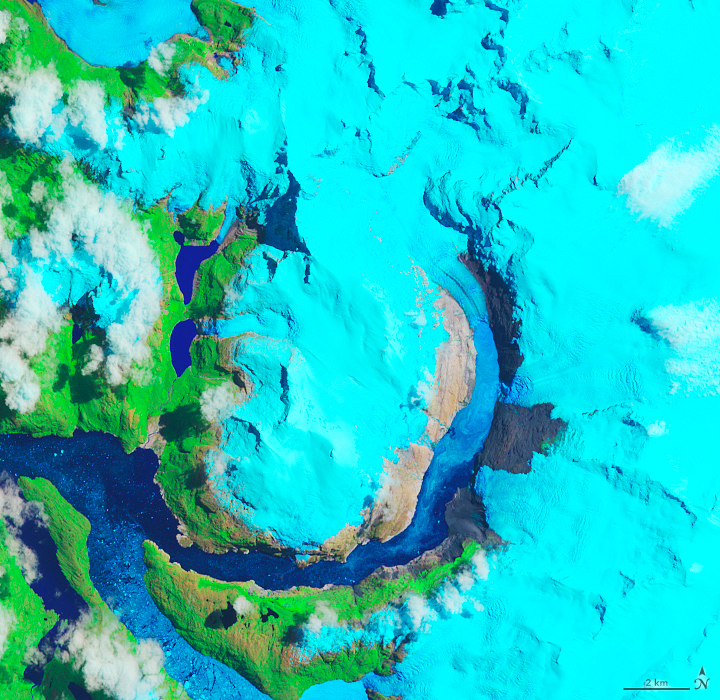The World's Fastest-Thinning Glacier Identified
The glacier in Patagonia has lost half its length in 30 years.

A glacier in Patagonia that has lost half its length in 30 years may be the fastest-thinning glacier on the planet.
The glacier, known as Hielo Patagónico Sur 12 (HPS-12), is perched in the Andes mountains in Chile. Researchers reporting in the journal Nature Geoscience in September found that HPS-12 has been losing thickness and retreating inland. According to their analysis of satellite data, the glacier lost 98 feet (30 meters) of ice thickness each year, on average, between 2000 and 2008, near its terminal end. At its fastest, the thinning occurred at a rate of 144 feet (44 m) per year, according to study co-author Etienne Berthier, a glaciologist at the University of Toulouse in France. The section where that thinning was recorded melted away entirely in 2018.
Related: Images of Melt: Earth's Vanishing Ice
"To our knowledge, this is indeed the fastest observed rate of loss for a glacier," Berthier told NASA's Earth Observatory.
The Earth Observatory released before-and-after photos yesterday (Oct. 29) showing the stunning ice loss. One satellite shot — taken on Jan. 27, 1985, by a tool on the Landsat 5 satellite — shows the ice of the glacier sweeping down from the mountainside in the Southern Patagonia Icefield. A comparison shot taken by the Operational Land Imager on the Landsat 8 satellite in January 2019 shows an entirely different world: The glacier hunkers into just a portion of its fjord, exposing a large section of bare rock.

The glaciers of Peru and Chile are known as "tropical glaciers," a seeming oxymoron that signifies that the glaciers sit in Earth's midsection, rather than near the poles. Tropical glaciers are retreating rapidly. Research released in 2013 found that glaciers in the Andes have lost between 30% and 50% of their surface area since the 1970s. These glaciers are vulnerable to warming both from above (due to air temperatures) and below (due to ocean temperatures at the glacier terminus, or the end of the glacier that is advancing or retreating.
Seasonal glacial melt provides water that feeds agriculture and industry, but as ice retreat hastens, that meltwater can also kill by causing floods and avalanches. As the ice disappears entirely, water in the Andes will become an increasingly scarce resource, according to Columbia University's Earth Institute.
Sign up for the Live Science daily newsletter now
Get the world’s most fascinating discoveries delivered straight to your inbox.
Because the glaciers are incredibly remote, they are hard to study except via satellite. That's why HPS-12's status as the fastest-thinning glacier on Earth comes with an asterisk: There may be other glaciers that are disappearing even faster without humans having noticed, Berthier told the Earth Observatory.
"There is still a lot to learn about patterns of glacier mass loss in remote regions," she said.
- Images: Greenland's Gorgeous Glaciers
- Photographic Proof of Climate Change: Time-Lapse Images of Retreating Glaciers
- Photos of Melt: Glaciers Before and After
Originally published on Live Science.

Stephanie Pappas is a contributing writer for Live Science, covering topics ranging from geoscience to archaeology to the human brain and behavior. She was previously a senior writer for Live Science but is now a freelancer based in Denver, Colorado, and regularly contributes to Scientific American and The Monitor, the monthly magazine of the American Psychological Association. Stephanie received a bachelor's degree in psychology from the University of South Carolina and a graduate certificate in science communication from the University of California, Santa Cruz.









